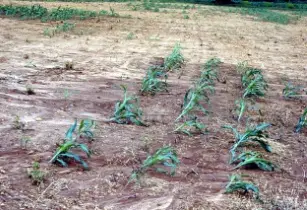Regions located in the tropical climate zones suffer the greatest rainfall-related soil erosion, according to a study published in Scientific Reports, an online open access scientific mega journal
The study has developed the global rainfall erosivity database and a global erosivity map. According to the study, apart form providing moisture necessary for plant growth, the rainfall is also one of the prime causes of soil degradation, which is responsible for jeopardising food and water sustainability in the tropical regions.
With soil erosion having strong impact on agricultural production as well as flooding and landslides, calculating rainfall erosivity can effectively mitigate the risk of agri-output and other disaster-related risks in environment.
The international team relied on rainfall data from 3,625 stations that is scattered across 63 countries to model annual rainfall erosivity for different regions.
The annual mean rainfall erosivities for tropical countries are found to be more than double the global average of about 2,190 megajoule millimetres per hectare per hour per year.
Commenting on the analysis, Panos Panagos, study leader and scientific officer at the Joint Research Centre at European Commission, said, “The tropical forests and the monsoon zones have intense rainfall but also excess monthly precipitation.”
“The Mediterranean zone has seasonal rainfalls which are less intense than the ones in the tropical zones,” Panagos added.
The analysis shows that South America, particularly Brazil, Columbia and Peru, South-Eastern Asia, particularly Cambodia, Indonesia, Malaysia, the Philippines and Bangladesh, the Caribbean and Western and Central Africa have annual mean rainfall erosivities greater than 5,000 megajoule millimetres per hectare per hour per year.
Canada, the Russian Federation, Northern Europe, Northern Africa and the Middle East have the lowest annual mean rainfall erosivity among the cold and dry regions.
Anton Vrieling, assistant professor of geo-information science and earth observation at the University of Twente, the Netherlands, lauded the effort in calculating global rainfall erosivity rate. However, he observed that it would be more effective and useful to calculate at different times in a year than having an annual average value.
“In a given year, there are rainstorms of different intensity and duration. Other factors like the protective vegetation also vary throughout the year,” he explained.








